Congratulations to the venerable Mitsubishi Pencil Company (founded in 1887) on the occasion of the fiftieth anniversary of the Uni pencil brand!
This anniversary was publicly marked last month with press releases and some new products – a pencil holder that we’ll look at in a future post, and an extension of the range of the Hi-Uni pencil to twenty-two degrees – 10H to 10B!
The Hi-uni 10B is especially interesting because Mitsubishi just introduced another 10B pencil – the brush pencil (fude enpitsu)! See more at Dave’s Mechanical Pencils.

So what is the difference between the two? Let’s take a look.
Weight
The Hi-uni may weigh more. We are using a small sample size here (basically one or two), and past experience indicates that individual pencils, containing organic elements (wood) can have some weight variation. But, this Hi-uni is fractionally heavier than the brush pencil.
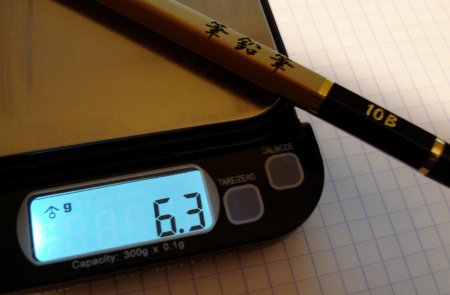

Diameter
The side-to-side length of both pencils, measured by a micrometer, is 7.25mm. They are indistinguishable in this aspect.
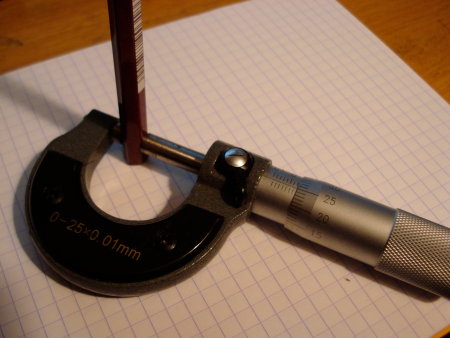
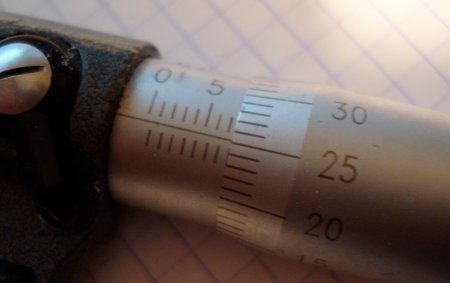
Lead core
I don’t know a way to remove just – and only just – the wood, so as to place the core in the micrometer. Viewing a ruler by eye has led me both ways – the cores are the same – or – they are not the same.
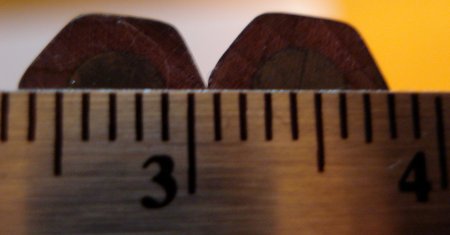
On paper
The darkness difference between the pencils – if it exists – isn’t anything I can reliably distinguish.
The drawing experience favors the brush pencil – they are waxier and smoother, in my estimation.
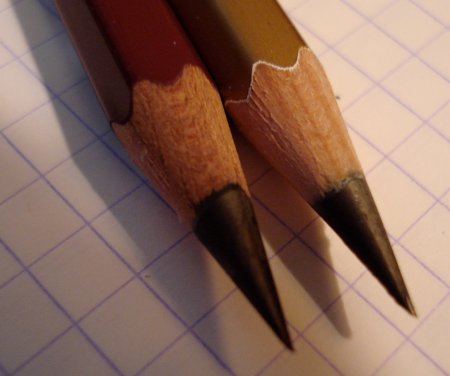
10B is an extreme grade for some, yet I hope it will be tried by those who are interested.
Overall, these pencils are great contributions to the world of graphite arts. While some proclaim the pencil dead, Mitsubishi Pencil Co. is investing in extending the product – and succeeding.
My thanks to isu of the uncomfortable chair for sending me the fude enpitsu!

Nice report. Hope JetPens starts carrying some of those brush pencils.
Stephen, I don’t remember where I first read about the fude enpitsu, here or at Dave’s Mechanical Pencils, but my response to your news that Mitsu-bishi has extended the range of the Hi-Unis to 10B on the soft end is positively Pavlovian. PayPal here I come. On the question of which lead core is thicker in diameter my guess is that one or both cores are slightly out of round or that a gradation of a thousandth is too fine for the human eye to readily perceive (of course this latter begs the question of why we persist in using micrometers).
But I am niggled by the question why Mitsu would offer both a Maserati and a Lamborghini in 10B. Any chance the fude enpitsu (brush pencil) is water-soluble graphite?
Sorry to wax on here, but the core of the Hi-Uni looks darker than the core of the brush pencil in your final photo. I am also somewhat surprised that Mitsu went with white under the gold lacquer of the fude enpitsu. The more I see of this the more I don’t like it–now I think I understand why women have a horror of their slips showing. Nice play on ‘graphic arts’ by the way, I missed that the first time through:>))).
Thanks for the comments, Alberto and Barrel.
The brush pencil is not water-soluble.
An interesting external difference is the price. As I read from Dave’s blog, the brush pencil is priced four to five times higher than the Hi-uni!
The most expensive woodcase drawing pencils on the market are the premium colour pencils – where lightfastness is a studied and sought after attribute. Perhaps the brush pencil has some similar property?
Hi Stephen, how much better can the new Caran D’Ache Luminance Colored Pencils be than Faber-Castell’s fabled Polychromos line? About $1 per pencil, that’s how much better :>))). Your conjecture on lightfastness vis-a-vis the 10B Hi-Uni and the Mitsubishi brush pencil is certainly plausible. For all who are interested, JetPens has added the Hi-Uni 10Bs (and the other new degrees) to their wooden pencil inventory.